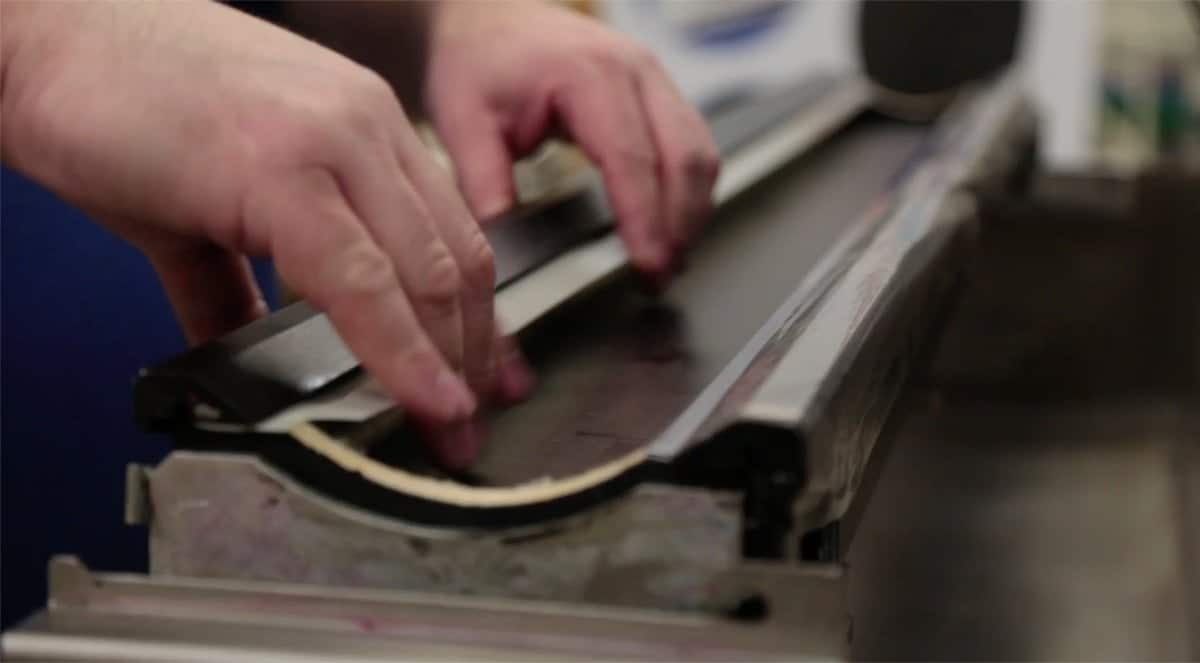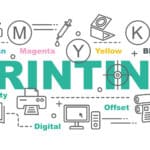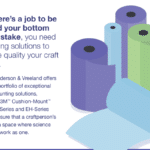‘Ah-ha’ Moments with Doctor Blades and End Seals
The unsung heroes of flexo printing are anything but commodity items
The converter’s anilox rolls were wearing quickly, requiring press operators to search the printing plant to find rolls of sufficient quality to be able to run jobs for key customers. This cut into production volume and impacted the quality of jobs being produced. But why were the anilox rolls wearing so quickly?
The problem was traced to the doctor blades, which were made of low quality steel that wore quickly and damaged the rollers. The blades were the lowest-cost choice of a purchasing agent who had obtained attractive pricing but did not appreciate how inexpensive blades could result in excessive wear on the rolls, requiring recovery and even replacement of costly rolls. Add to that a frustrated workforce that felt they were not being given the right tools to do their job.
In this case, lack of communication between the purchasing agent and the production team meant the agent was missing some key information about the flexographic printing process. And he was not alone. Inexpensive consumables such as doctor blades and end seals are often seen as commodities to be acquired for the lowest possible price. This works in some instances, but more often, you get what you pay for.
Andy Gillis, President and CEO of Provident, says production and plant managers should think of doctor blades and end seals in terms of ROI. Although these items are replaced frequently, they can have a significant impact on a converter’s operations—and the bottom line.
Most doctor blades are made of steel or an alloy, but just as there is a difference between unbranded razor blades for shaving, there is a difference in doctor blades. Our manufacturing processes ensure we have the best grades of steel with a high chrome content [for wear reduction], have tight tolerances, and that the blades are straight so they wear evenly, run longer and minimize wear on the anilox rolls,
explains Gillis. These all combine to enhance print quality, anilox roll life, and overall productivity.
Opportunity Cost
One does not usually think of consumable items being important to productivity and profitability, but doctor blade quality can have a significant impact on a converter’s bottom line. For example, although Provident’s blades cost more than some competing products, they last up to eight times longer, resulting in a monthly cost of about one third of that for regular blades. This can easily add up to $30,000 to $40,000 a year,
says Gillis.
In another instance, a company was sending out several anilox rolls a month for recovery, at a cost of around $2,000 per roll, because the blades they were using were too hard and were damaging the rolls. That was over $15,000 a month,
recounts Gillis. And that doesn’t count the opportunity cost.
Opportunity costs are those associated with work that could be done, but isn’t, or as some veteran print executives might say, ‘whenever you’re not printing, you’re not making money.’
Press operators and even production managers—often focused on getting jobs out the door—don’t always see press downtime in terms of lost revenue per hour or as opportunity costs, as might a business owner. As a result, they don’t think of downtime for replacing consumable items as impacting revenue and profitability.
The best companies seem to have cultures that make this connection all the way from the president to the guys on the shop floor,
notes Gillis. Larger companies are usually better at this than smaller ones, but there are plenty of smaller firms where everyone pays attention to the ROI of everything they buy, including consumables like doctor blades and end seals.
Gillis has found that converters with household-name customers are more likely to invest in better doctor blades because they realize the blades help ensure more consistent print quality throughout the length of a print run than blades made of lower quality steel. In contrast, customers producing high volume but generic items, such as plastic grocery bags, are content with lower cost blades because brand-name quality is typically not as important.
End seals… and shoes
End seals, another Provident product, are often considered generic items. Gillis admits that basic seals can be acceptable for narrow web flexo shops because any leakage can usually be confined to ink trays. But on mid- and wide-web flexo presses running at high speed and with large volumes of ink in play, failure of these simple parts can result in expensive downtime. As with doctor blades, added quality can provide value beyond the immediate function of the component.
End seals for big presses are almost like custom shoes,
notes Gillis. Every press is a little bit different and having seals made for a specific press can make the difference between jobs that run without errors and having a seal blow out, resulting in several hours of costly clean-up and down time.
As with doctor blades, the choice comes back to the Return on Investment. A better doctor blade can be used longer before it needs replacing and is less likely to damage expensive anilox rolls, while a better engineered end seal provides greater reliability. And when designed to work together, both items can be replaced at the same time—at the end of their useful lives—further helping maintain uptime and profitability.
We love to tell our story,
relates Gillis. When converters see the big picture of how these small parts of the flexo process can have a significant impact on profitability, they have an ‘ah-ha’ moment. From then on we are no longer talking about consumables. We’re talking about how we can help make their businesses more successful.
Article reposted from Provident’s blog, published on 01/26/2016




